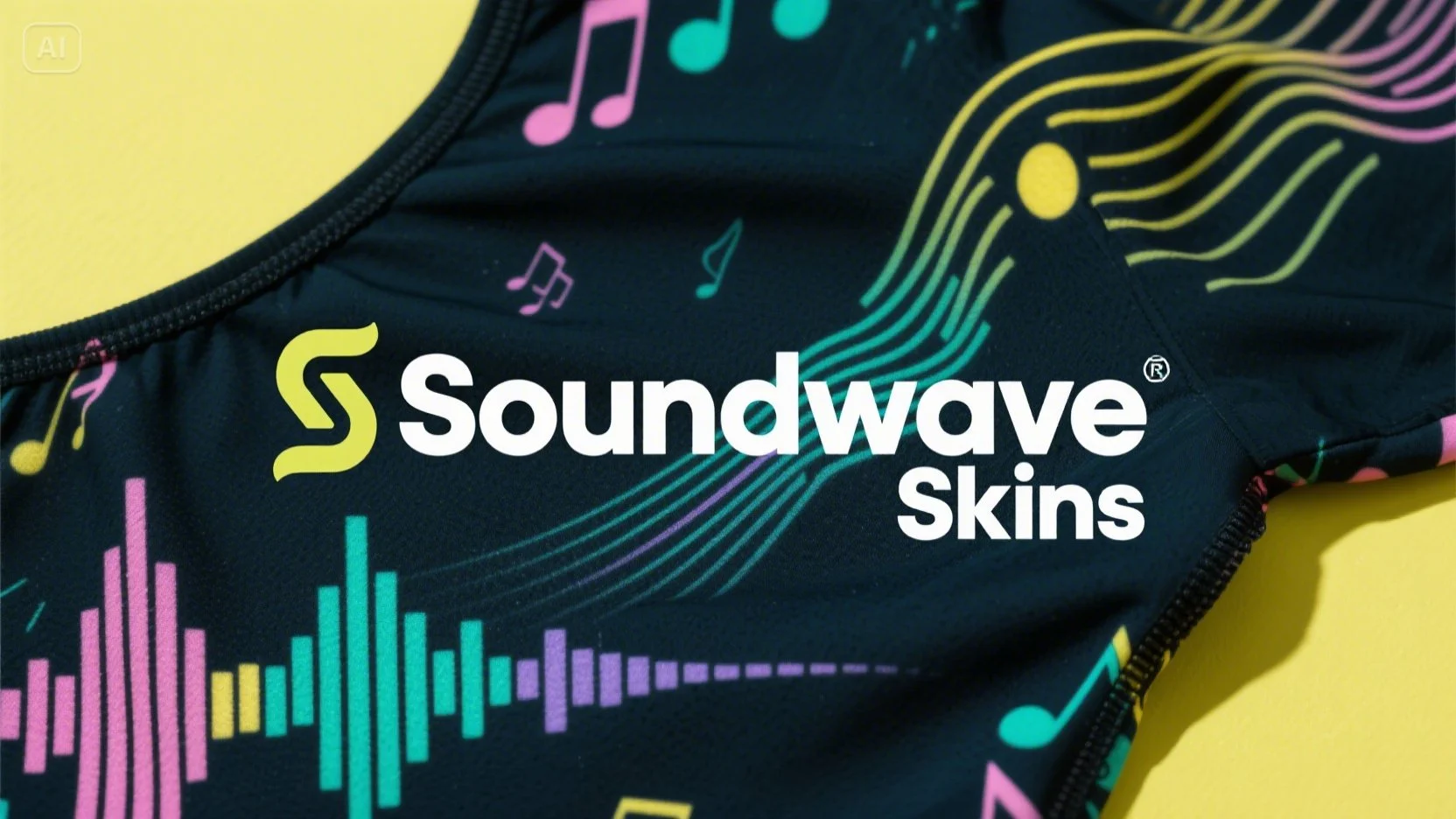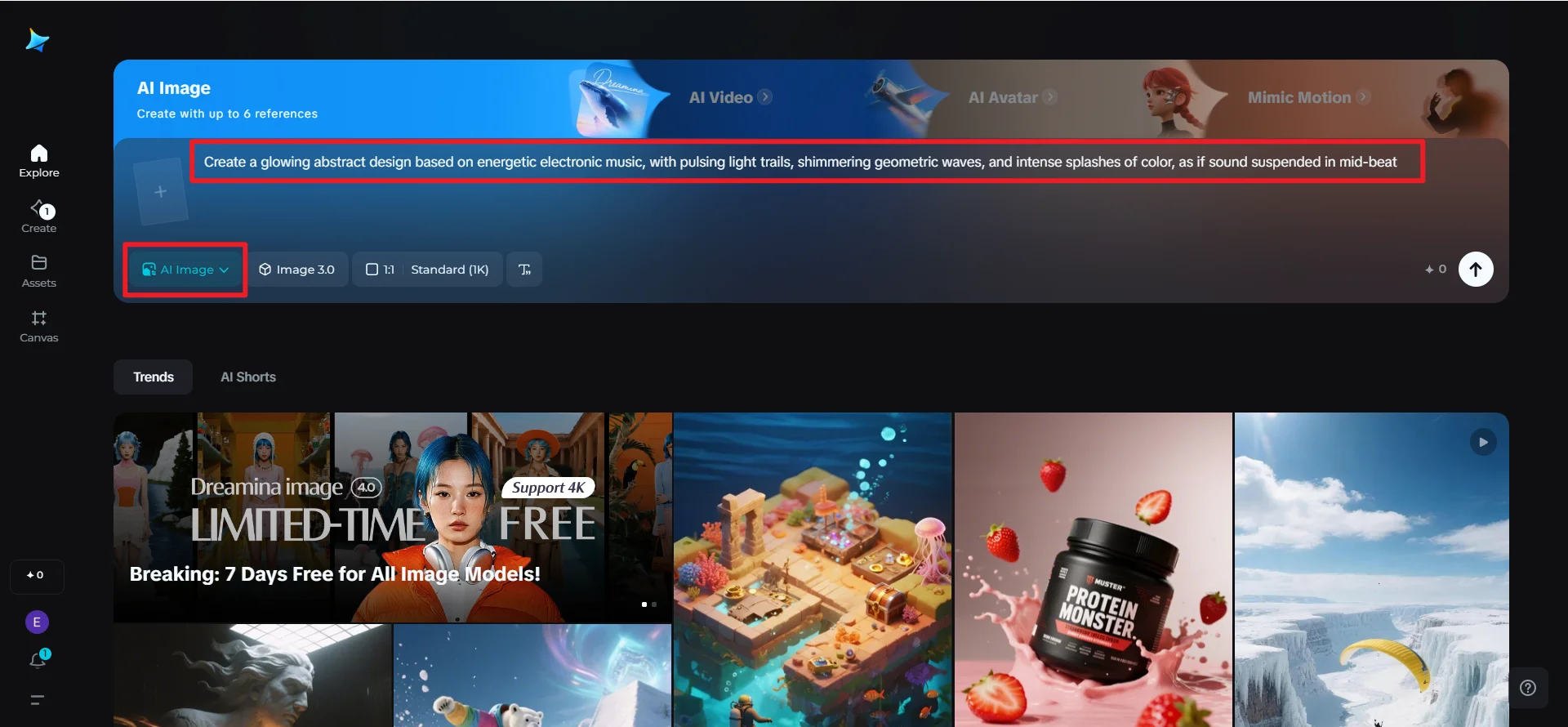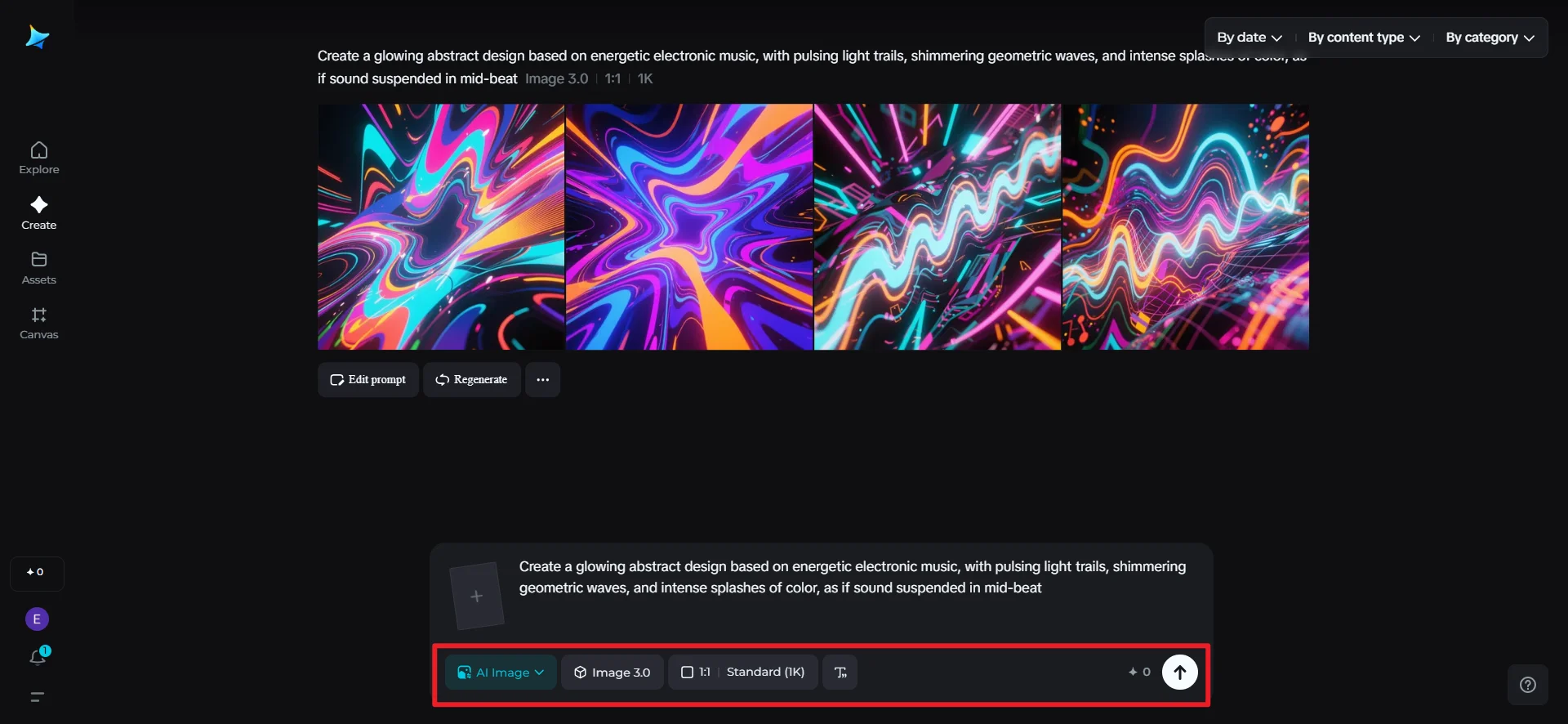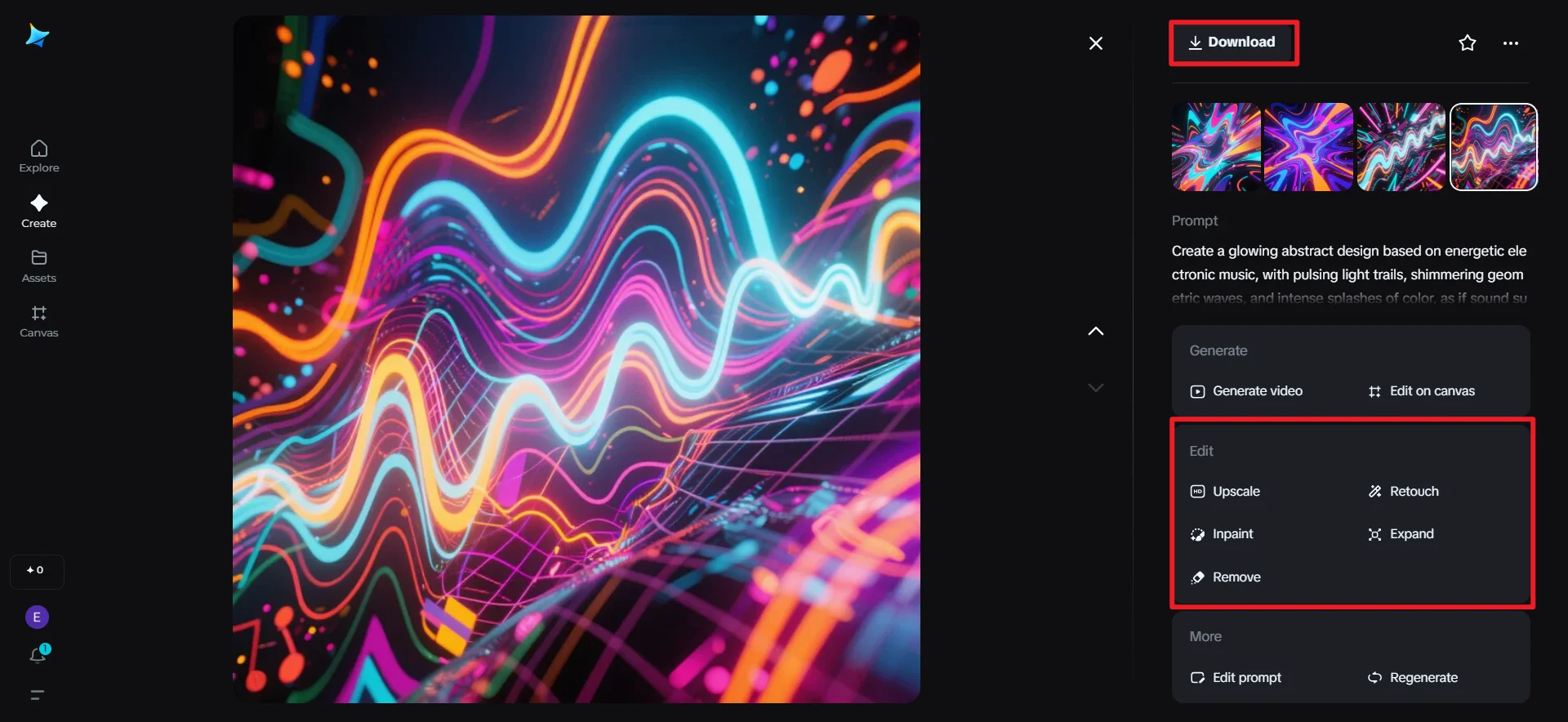What if your playlist wasn’t something you listened to—but something you wore, touched, or unwrapped? Picture a can of soda humming with electric waveforms from your go-to summer jam, or a hoodie emblazoned with spinning patterns taken directly from an all-night lo-fi single. Although music has always had an impact on memory and mood, it is now possible to transform sound into visual identity with programs like Dreamina and an AI photo generator. All at once, campaigns, merchandise, and packaging are no longer silent; instead, they pulsate, vibrate, and sparkle with vibrant design.
The concept of soundwave skins is not merely sticking a waveform onto a product. It’s the interpretation of rhythm, bass, and melody into textures, gradients, and visuals that turn emotion into physical form. Brands and artists are venturing into a world where playlists don’t exist solely in headphones but resonate over objects, making products memorabilia of experiences.
Each playlist has a story behind it, whether it’s road trip-themed, a workout mix, or rainy-day tunes. Translating that narrative into design is a matter of deciphering music’s unseen strings—tempo, mood, genre—and plotting them into visual form. A peppy tune can burst into electric bursty blocks of color, and a soulful ballad can inhale into gentle pastels and wavy lines.
- A pop brand might create packaging in which glittering beats appear as metallic gradients.
- Independent artists may drop merch where their songs burst into abstract art prints.
- Drink brands may create limited runs where every flavor has its own playlist-named skin.
The ritual turns listening into viewing. It’s as if it’s giving sound a fingerprint, and having products bear that identity out into the everyday.
Transforming packaging into a stage
What if unboxing were like hitting play? Packaging has traditionally been a storytelling space, but soundwave skins elevate it—transforming boxes, labels, and wrappers into visual concerts. The outside sheath is a stage, where graphics dance like instruments caught in the act of performance.
Some strategies might be:
- Wrappers with zigzag patterns evoking electric guitars.
- Drinks cans covered in flowing ribbons that throb like basslines.
- Cosmetics packaging whose color changes like harmonies in a vocal chorus.
In every instance, the product is a visual communicator—conveying a mood before the consumer even touches it. Unlike conventional branding, the designs in question don’t merely speak; they sing.
Merch that carries your playlist
Music merch has never just been about clothing—it’s about identity. A band tee is a badge, a hoodie is a canvas of belonging. But Soundwave skins take this to a new level: merch that’s not only directly inspired by music, but is actually born from it.
Fans might wear abstract graphics instead of plain logos or album covers. Those graphics would come from the rhythms and timbres in a track. A beat-heavy EDM set could turn into glowing geometric neon patterns. While a folk ballad might show up as earthy swirls. Kind of like wood grains and winds mixed.
- Adaptive design could make merch truly personal. You know, concert-goers could generate live visuals right from the set they attended. Then they could print those on posters.
- Online retailers are giving fans the option to insert a favorite song and receive a customized hoodie or tote.
- Brands are aligning themselves with streaming services to allow playlists to influence entire product lines.
This is where Dreamina’s AI logo generator might come into play—not simply to emblazon identity onto merch, but to enable logos themselves to throb, morph, and adapt in sync with the music they embody.

Immersive campaigns that harmonize sound and vision
Soundwave skins don’t end with objects—there’s spill-over into whole campaigns. Retail displays might change color patterns based on in-store playlists. Ads might undulate with motion when scanned, allowing customers to unlock a track encoded into the design. Even event tickets might become visual representations of the performance that they allow entry to, such as an equal parts audio and visual keepsake.
For marketers, this presents an unprecedented canvas. The potential opens up far and wide:
- Festival wristbands as living art pieces brought to life by the energy of the lineup.
- Pop-up shops where every section of product is the visual equivalent of a different genre.
- Interactive billboards that shift color to soundscapes of the city they are plastered upon.
Here, branding no longer occurs on a single sensory channel. It’s a visual-sound duet.
When music turns into a touch memory
The beauty of soundwave skins is in their capacity to transform ephemeral sound into permanent objects. We recall songs because of the way they make us feel—but what if we could recall them for the way they appeared as well? A chocolate wrapper attached to a summer single might be able to activate memories decades later. A jacket patterned by a love song might feel like wearing a memory sewn into the fabric. Combining this image generation with an advanced AI image editor like Dreamina is a game-changer. You can click “Canvas” to make creative editing even easier.
This combination of sensory memory is such that products aren’t merely worn or consumed—they’re stored in the same affective library as the music that inspired them. That makes it intimate, and makes it timeless.
Remixing reality with Dreamina
Dreamina joins this platform as a type of VJ for images. It empowers artists to play with how music becomes visual, how playlists transform into patterns. With its simple interface and artistic richness, anyone—marketers, designers, musicians, or enthusiasts—can turn music into graphics that are unique and vibrant.
Step 1: Write a detailed text prompt
Go to Dreamina and enter a descriptive account of what you would like your music-influenced visual to look like. The more detailed the description, the more vibrant your output will seem.
For example: A glowing abstract design based on energetic electronic music, with pulsing light trails, shimmering geometric waves, and intense splashes of color, as if sound suspended in mid-beat.

Step 2: Fine-tune parameters and generate
Select your model, a package or merch-fitting aspect ratio, and a resolution size with 1k or 2k for sharp detail. Click on Dreamina’s icon and let it work its magic to produce your visual skin—your track in design form.

Once your visual is ready, take it further with Dreamina’s AI-powered editing tools. Use inpaint to reshape, expand to build larger canvases, remove to clean up unwanted elements, and retouch for polish. When your soundwave skin feels perfect, click the Download icon and it’s yours to use on packaging, merch, or campaigns.

A future where playlists live on products
The prevalence of soundwave skins heralds a future where identity, music, and branding melt into one. Playlists no longer end at the ears—they entwine around bottles, shine across t-shirts, and glimmer on posters. Products then don’t feel so static but rather as if they are living co-creations among artist, brand, and listener.
Dreamina pulls that off somehow. It takes the kind of magic in music you can’t really touch and turns it into designs for the real world. Linking up sounds with what you see, it draws you into marketing that’s basically a show by itself. Every product picks up on some rhythm. Every campaign has its own kind of beat going. The thing is, these days folks want actual experiences instead of just getting hit with ads. That sort of vibe sticks with you.
